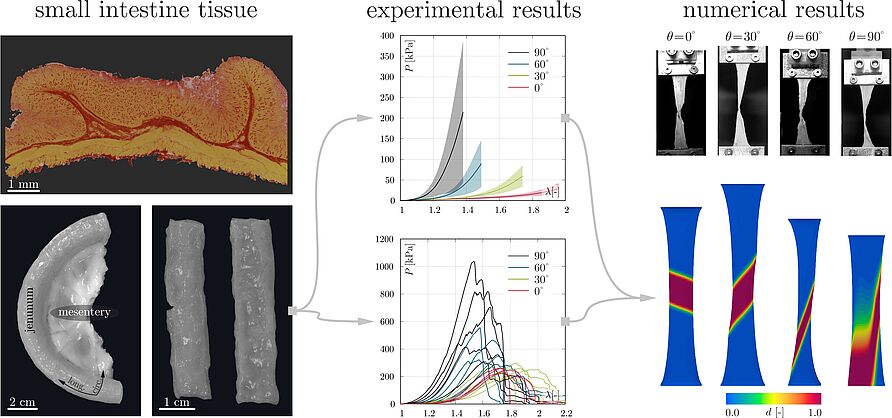We address anisotropic elasticity and fracture in small intestine walls (SIWs) with both experimental and computational methods. Uniaxial tension experiments are performed on porcine SIW samples with varying alignments and quantify their nonlinear elastic anisotropic behavior. Fracture experiments on notched SIW strips reveal a high sensitivity of the crack propagation direction and the failure stress on the tissue orientation. From a modeling point of view, the observed anisotropic elastic response is studied with a continuum mechanical model stemming from a strain energy density with a neo-Hookean component and an anisotropic component with four families of fibers. Fracture is addressed with the phase-field approach, featuring two-fold anisotropy in the fracture toughness. Elastic and fracture model parameters are calibrated based on the experimental data, using the maximum and minimum limits of the experimental stress-stretch data set. A very good agreement between experimental data and computational results is obtained, the role of anisotropy being effectively captured by the proposed model in both the elastic and the fracture behavior.
S. Nagaraja, K. Leichsenring, M. Ambati, L. De Lorenzis, M. Böl
On a phase-field approach to model fracture of small intestine walls
Acta Biomaterialia, in press, (2021) [Link]

